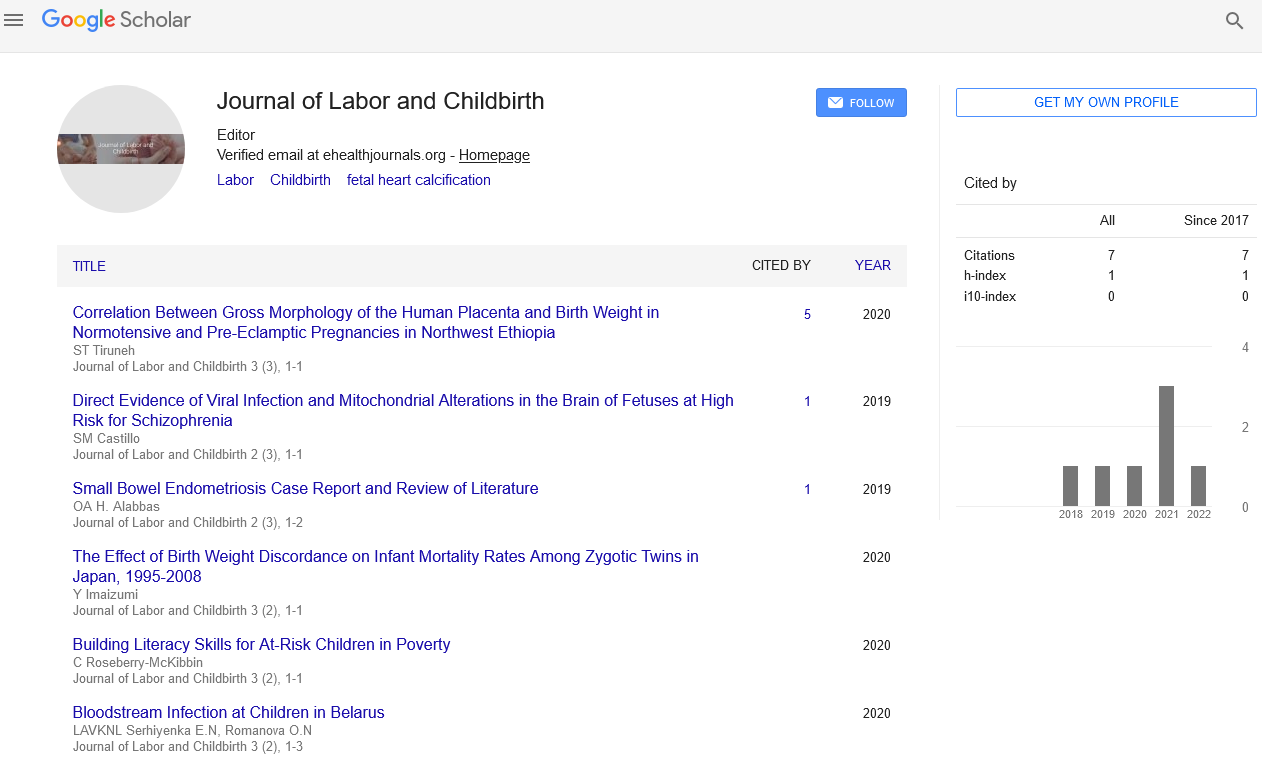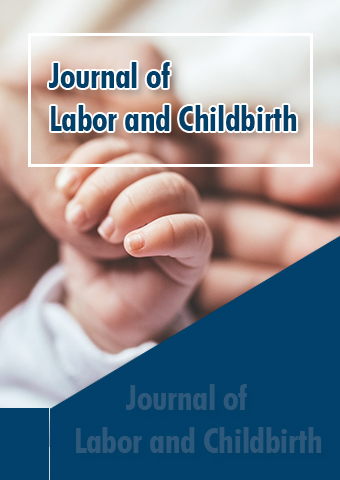Perspective - Journal of Labor and Childbirth (2024) Volume 7, Issue 5
Intrapartum Care: Ensuring Safe and Compassionate Childbirth
- Corresponding Author:
- Sara Kalucza
Department of Child Welfare,
Rami University,
Kiruna,
Sweden
E-mail: sara.kalucza@gmail.com
Received: 28-Sep-2024, Manuscript No. jlcb-24-149125; Editor assigned: 03-Oct-2024, PreQC No. jlcb-24-149125 (PQ); Reviewed: 17- Oct-2024, QC No. jlcb-24-149125; Revised: 21-Oct-2024, Manuscript No. jlcb-24-149125 (R); Published: 28-Oct-2024, DOI: 10.37532/jlcb.2024.7(5).268-269
Introduction
Intrapartum care, the care provided to a woman and her baby during labor and delivery, is a critical component of maternal healthcare. It is a period that demands the highest level of clinical expertise, emotional support and careful monitoring to ensure the safety and well-being of both mother and child. Effective intrapartum care is pivotal in reducing maternal and neonatal morbidity and mortality, which are significant indicators of a country’s overall health system performance.
Description
The importance of intrapartum care
The intrapartum period is a time of intense physiological changes for both the mother and the fetus. Proper management during this period can significantly affect outcomes. Globally, complications during labor and delivery are a leading cause of maternal and neonatal deaths. Hence, intrapartum care is essential for identifying and managing potential complications, ensuring timely interventions and providing supportive care that can enhance the childbirth experience.
Intrapartum care is not just about clinical interventions; it also encompasses the emotional and psychological support provided to the mother. This holistic approach ensures that the mother feels safe, supported and empowered throughout the childbirth process. The World Health Organization (WHO) emphasizes the importance of respectful maternity care, which includes maintaining the dignity, privacy and autonomy of the birthing woman.
Components of intrapartum care
Monitoring and assessment: Continuous monitoring of both the mother and fetus during labor is a cornerstone of intrapartum care. Fetal heart rate monitoring is essential to detect any signs of fetal distress, which may necessitate immediate intervention. For the mother, monitoring vital signs such as blood pressure, pulse and temperature can help identify potential complications like preeclampsia or infection.
Pain management: Labor pain is one of the most intense forms of pain a woman can experience. Effective pain management is a crucial aspect of intrapartum care and it should be tailored to the individual needs and preferences of the woman. Options for pain relief include pharmacological methods such as epidurals and non-pharmacological methods like breathing techniques, water immersion and the use of birthing balls.
Interventions and emergency care: In some cases, labor may not progress as expected or complications may arise that require medical interventions. These interventions can range from labor induction or augmentation with oxytocin to more invasive procedures like episiotomy or cesarean section. The decision to intervene should be based on a careful assessment of the risks and benefits, with the goal of ensuring the best possible outcome for both mother and baby.
Supportive care: Supportive care during labor involves creating a positive and supportive environment for the birthing woman. This includes providing continuous emotional support, clear communication and respecting the woman’s birth plan and preferences. Research has shown that continuous support during labor can lead to shorter labor durations, reduced need for interventions and a more positive childbirth experience.
Challenges in providing quality intrapartum care
Despite the importance of intrapartum care, several challenges can hinder its provision. One of the most significant challenges is the shortage of skilled healthcare providers, particularly in low-resource settings. In many parts of the world, women in labor may not have access to skilled birth attendants, leading to higher rates of maternal and neonatal complications.
Cultural and societal factors can also influence the quality of intrapartum care. In some cultures, women may face stigma or discrimination during childbirth, which can affect their access to quality care. Additionally, the lack of respectful maternity care in some settings can lead to traumatic childbirth experiences, which can have long-term effects on the mother’s mental health.
Strategies for improving intrapartum care
Improving the quality of intrapartum care requires a multifaceted approach that addresses both clinical and non-clinical aspects of care. Key strategies include:
Training and education: Ensuring that healthcare providers are adequately trained in the latest evidence-based practices is essential. This includes not only clinical skills but also communication, cultural competence and the principles of respectful maternity care.
Access to skilled care: Expanding access to skilled birth attendants, particularly in rural and lowresource settings, is critical for reducing maternal and neonatal mortality. This may involve training more midwives, improving transportation and referral systems and ensuring that facilities are equipped to handle obstetric emergencies.
Respectful maternity care: Promoting respectful and dignified care during childbirth is essential for improving maternal satisfaction and outcomes. This includes addressing issues such as informed consent, privacy and the right to a companion of choice during labor.
Conclusion
Intrapartum care is a vital aspect of maternal healthcare that requires a combination of clinical expertise, emotional support and respect for the birthing woman’s autonomy. By addressing the challenges and implementing strategies to improve the quality of care, we can ensure that more women have safe, positive and empowering childbirth experiences. As global efforts continue to focus on reducing maternal and neonatal mortality, the importance of quality intrapartum care cannot be overstated. It is through these efforts that we can move closer to achieving the goals of healthy mothers, healthy babies and healthier communities.

